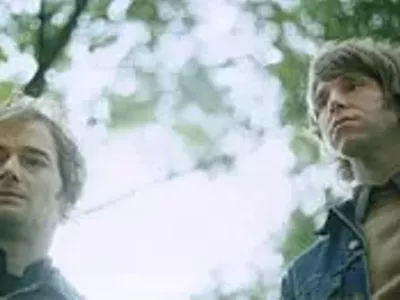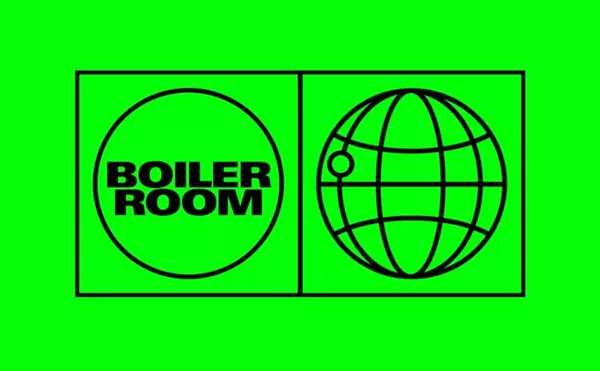
Audio By Carbonatix
[
{
"name": "GPT - Leaderboard - Inline - Content",
"component": "35519556",
"insertPoint": "5th",
"startingPoint": "3",
"requiredCountToDisplay": "3",
"maxInsertions": 100,
"adList": [
{
"adPreset": "LeaderboardInline"
}
]
}
]
Ever since R. F. Outcault’s irreverent creation, The Yellow Kid, first appeared as an incidental character in Joseph Pulitzer’s New York World on Feb. 16, 1896, comic art in America has seen an enriching array of artists whose unique personal visions have transformed popular culture.
For over a century, every era has had its own defining graphic delineator. So when the punk-rock/new-wave revolution hit North America in the summer of 1976, it was only fitting that this nascent movement should also be documented by its own cartoon chronicler. Enter John Holmstrom, the writer-artist-founder of New York’s legendary hand-lettered PUNK magazine.
One of Holmstrom’s most famous and enduring legacies is his seminal work on the Ramones’ third album, Rocket To Russia. His satirical back cover perfectly encapsulates the archetypal angular Holmstrom style. Of equal importance are the 14 lyric illustrations that originally adorned both sides of the album’s inner sleeve. His subsequent iconic cover art for the Ramones’ Road To Ruin notwithstanding, these fourteen drawings are the pure distillation of Holmstrom’s art, and the enduring definitive example of his distinctive style.
In an exclusive recent interview, John Holmstrom, from his home in New York City, was gracious enough to discuss his pioneering work with the Ramones.
Metro Times: What do you remember about Rocket To Russia?
John Holmstrom: I remember a lot! I was brought into the creative process early on. Since I had directed the shoot for the first Ramones cover — which was taken by Roberta Bayley for PUNK #3 — Danny Fields, their manager, asked me to be there when he shot the photos for the front cover, sort of for good luck. So I hung out behind CBGBs while Danny took a few shots while the Ramones stood among the garbage and trash behind the club.
At that time it seemed like the synergy between PUNK magazine and the Ramones was perfect — and honestly, I think it was. PUNK was like the print version of the Ramones, so the Ramones figured I’d be the right person (along with Arturo Vega, who was designing their logo and stuff) to help develop their look. I think that they wanted that serious look for the first two records but since the third record was lighter and more fun, they’d try me out and see if I could do some cartoons for them. Anyhow, Johnny asked me if I had ideas for the inside sleeve art. They wanted to do something ambitious. Something new. Something to define the band.
Originally, I pitched the idea to do the inside sleeve of Rocket To Russia as a multi-media event with contributions from many people. For instance, we did a photo shoot for “Teenage Lobotomy” that Joey Ramone art-directed at Arturo’s loft. It featured a high-class dinner table setting — fork, knife, spoon, napkin, wine glass — with a cow brain on the main plate.
I also invited Dirty Duck creator Bobby London to contribute ideas. I ended up using his idea for “Surfin’ Bird,” but I think his drawing was better. I also used a lot of his ideas for “Cretin Hop” — we published his original drawing in PUNK #12. However, Johnny (who always made the ultimate decisions about cover art whenever I was around) decided that he wanted the entire sleeve to consist of only my drawings.
What I remember most was the deadline, because they needed the drawings in two or three days! So I had to do everything very fast. As a result, I was never very satisfied with the end results. It wasn’t my best work. But I pulled out all my tricks. For instance, the drawing for “I Wanna Be Well” was one of a series of hundreds that I did for a multimedia project called The Joe Show. The “Ramona” drawing was a reconfiguration of the cover of PUNK #3, which featured Joey Ramone.
As I recall, Danny Fields and Linda Stein insisted that we use Bugs Bunny in a leather jacket for “Rockaway Beach.” Sire had just inked a distribution deal with Warner Bros., who were best known for Bugs. And since this was going to be the Ramones record that softened their image to make them mainstream friendly, it was their attempt to get Warner Bros. behind them and to accept the punk thing.
Metro Times: What about your back cover illustration?
Holmstrom: I remember Johnny giving me his concept for the back cover. I got the impression he had come up with the album title as well. He wanted a funny drawing of a pinhead literally riding a rocket to Russia, similar to the Dr. Strangelove movie, with a cartoon map of the whole world.
Johnny specified the African headhunter and the Arab, I don’t remember who came up with the Transylvanian vampire or the Soviet Work Camp workers. I do remember Johnny mentioning that a French magazine gave the record a bad review because we didn’t include the Eiffel Tower in the world map!
Metro Times: Where did that angular style of yours come from, anyway?
Holmstrom: My drawing style was mostly inspired by Don Martin and Steve Ditko. They were my two biggest influences. I used to copy their stuff all the time in junior high school. Ditko in particular is still a big hero of mine to this day. He should be discovered by the world as one of the greatest artists of the 20th century. After all, he is probably the greatest eccentric of all time. But I also copied all the ZAP cartoonists like Crumb, Shelton, and Griffith. Harvey Kurtzman and Will Eisner (my teachers at the School of Visual Arts who both later hired me for freelance work before I started PUNK) also had a huge influence on me.
Metro Times: I’ve always considered your stark and uncompromising illustration for the Ramones’ “Why Is It Always This Way?” to be your masterpiece. It really impacts the viewer viscerally on a very deep emotional level.
Holmstrom: This is probably the weirdest thing I ever heard! Like I said, I was under a tremendous deadline pressure to get the drawings to the band, so there were certain songs I figured were “throwaways.” This was one of them. I think it took me less than an hour to draw — and since the concept of a woman in a jar of formaldehyde worked, that was that. In fact, that’s the drawing I’ve always been most embarrassed by!
Maybe Eno was right when he said that the things we’re most embarrassed by are what make us interesting …
Jeffrey Morgan is a freelance writer. E-mail letters@metrotimes.com




